In general, ferns are long-lived, low-maintenance plants, which can survive in a wide range of environments. As testament to their resilience, ferns have existed on earth for over 350 million years and are still going strong. When it comes to our own homes and gardens, though, we tend to be more interested in how long a particular specimen will survive.
Indoor ferns can last for many years – even decades – with proper care and attention. One family in Virginia claim to have maintained their Boston fern for over 114 years! With re-potting and propagation, single plants can be regenerated again and again, making such advanced ages possible. In the garden, ferns can last indefinitely if conditions are right, with some species of tree ferns known to live for centuries.
The key to a good lifespan is ensuring a good match of fern species to the local conditions. For busy households, there are several species that can thrive on neglect, needing minimal maintenance beyond watering and occasional feeds. Other ferns can be more demanding, needing careful consideration of temperature, humidity and light levels to survive long term. Here are some of the key issues to bear in mind when planning your fern’s future.
How to keep indoor ferns healthy
Although every species of fern will have its own particular requirements to thrive, there are some important general principles that apply widely. For indoor ferns, the factors that will limit their growth and survival are the composition of the soil they are growing in, and how their pots are positioned in terms of temperature, humidity and sun.
When a fern has been maintained for three to five years, it can become pot bound, with the roots crowding the space and the soil becoming exhausted of nutrients. At this point, the fern needs to be replanted into a larger pot with fresh compost, or split and separated into two or more sections that can be propagated on.
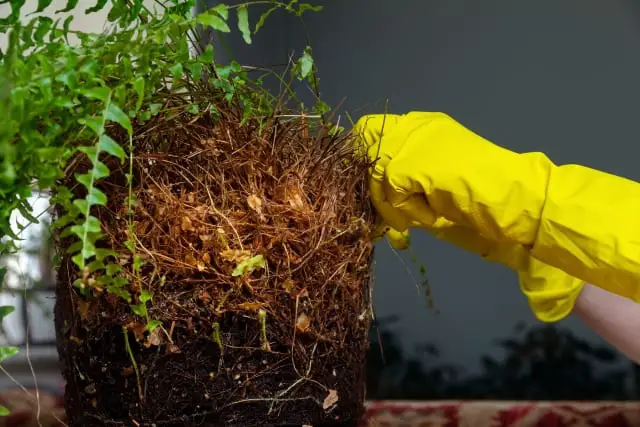
Because the soil in potted ferns is only replaced every few years, occasional supplementation with fertilizer will prolong the life of mature plants. Ferns are less fussy than other houseplants, but adding fertilizer to waterings from time to time during the growing season is appropriate. A nutrient-balanced indoor plant fertilizer diluted to half the recommended strength is suitable (Miracle-Gro is fine). Too much fertilizer can be worse than too little, as it risks scorching the roots, so be sparing is the best policy.
For humidity, ferns should be kept away from drafts and sunny windowsills where they might dry out quickly. Placing the pots on wet stones, or positioning near bathrooms or kitchens can be a good tactic for those varieties needing higher humidity levels – with humidifiers or misting being options for particularly sensitive varieties.
Another important part of increasing lifespan is getting watering right. Some species tolerate periods of drought, or periods of being waterlogged, so it is possible to select the right fern for when you can’t be on hand to pamper, but most ferns prefer moist but well-drained conditions. That means a potting mix with some grit and enough drainage to mean the plant is never sitting in water. By giving short doses of water and allowing it to be absorbed before the next drink, you can get the conditions right.
Another tip is to keep the fern in a moisture-resistant pot to prevent evaporation. Plastic is better than terracota – which can breathe – but for the sake of aesthetics, you can use a plastic liner or sit a plastic pot inside the terracota to disguise it. Generally, testing the moisture of the soil with a fingertip, or lifting the pot to judge weight (and whether any standing water is underneath) is a good index of whether the fern needs topping up.
Finally, the amount of sun that ferns prefer varies between species, with most growing best in indirect light – neither complete sun or shade. North facing windowsills, or positions that are deeper into the room, are ideal.
Low maintenance indoor ferns
For those looking for robust indoor ferns that will last a long time without requiring a big time commitment for care and maintenance, here are some of the best options:
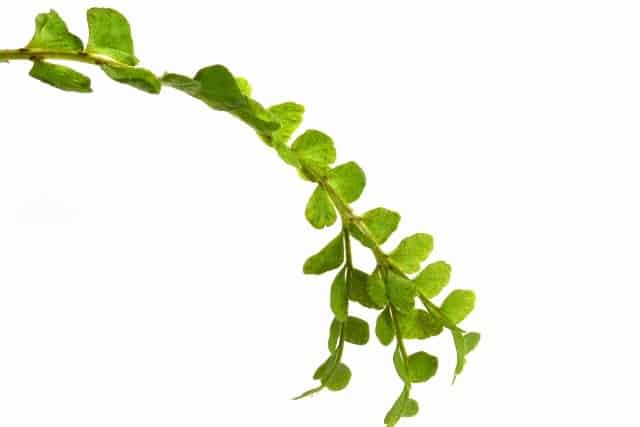
Lemon button fern
- Nephrolepis cordifolia (duffii)
- Evergreen
- Partial shade
- Height: up to 0.5 m
- Soil: acid or neutral. Moist, well-drained.
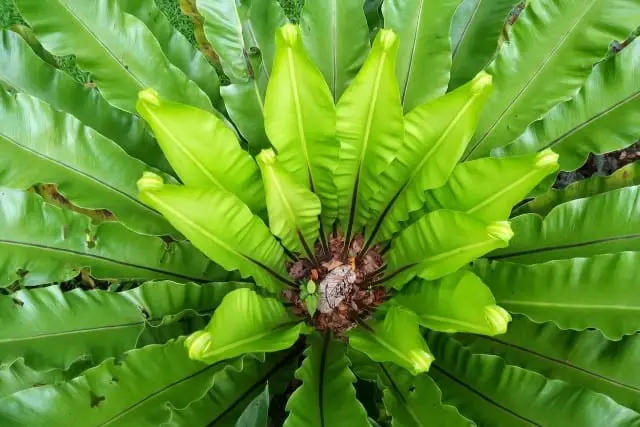
Bird’s nest fern
- Asplenium nidus
- Evergreen
- Partial or full shade
- Height: up to 1 m
- Soil: acid or neutral. Moist, well-drained.
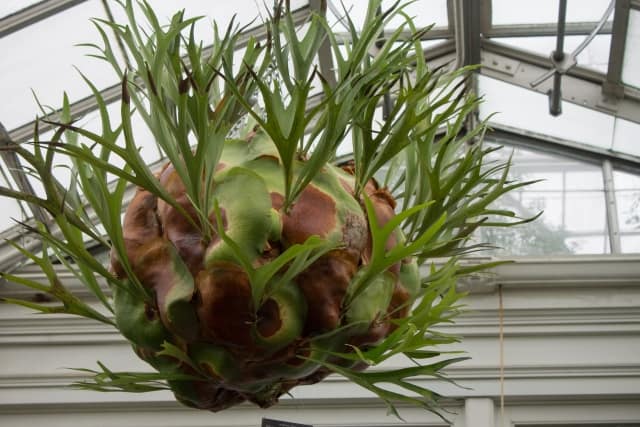
Staghorn fern
- Platycerium bifurcatum
- Evergreen
- Prefers partial shade
- Height: up to 1 m
- Epiphytic (but can be grown on loam). Keep moist, well-drained.

Holly fern
- Cyrtomium falcatum
- Evergreen or semi-evergreen
- Full or partial shade
- Height: up to 1 m
- Soil: acid, neutral or alkaline. Moist, well-drained.

Boston fern
- Nephrolepis exaltata
- Evergreen
- Partial shade
- Height: up to 1 m
- Soil: acid or neutral. Moist, well-drained.
How to care for outdoor ferns
Ferns planted directly in the garden need minimal attention after they are established. Most ferns take five to ten years to reach their full height and spread, but will continue to survive well thereafter. Fern propagate in two ways – by release of spores to establish new plants, or by creeping rhizomes that spread through the soil, projecting up new clusters of fronds as they go.
Many ferns are deciduous, and their fronds will turn brown and die back over winter. Come spring, they will send up new fresh and healthy fiddleheads – the growing fronds that unravel as they reach their full length. This is the normal life cycle of a perennial, and needs little maintenance, other than clearing away last years fronds if they threaten to trap too much water around the rhizomes.
The life span of outdoor ferns is predictably at the mercy of the weather. Heavy rain can drown some species that need well-drained soil. Long periods of drought can mean watering is needed to prevent dehydration. A cold winter can hammer some sensitive varieties, meaning that insulating the base of the fern with straw or (even better) dead leaves is needed to protect the rhizome from freezing.
Despite these traumas, many ferns are hardy and resilient, and can recover as long as the rhizome has not been too extensively dried, damaged or rotted. The record holder for resilience is surely the amazing resurrection fern (Pleopeltis polypodioides), which can withdraw long periods of drought (some scientists believe up to a hundred years!) in a curled up dessicated state, but recover within 24-48 hours after watering.
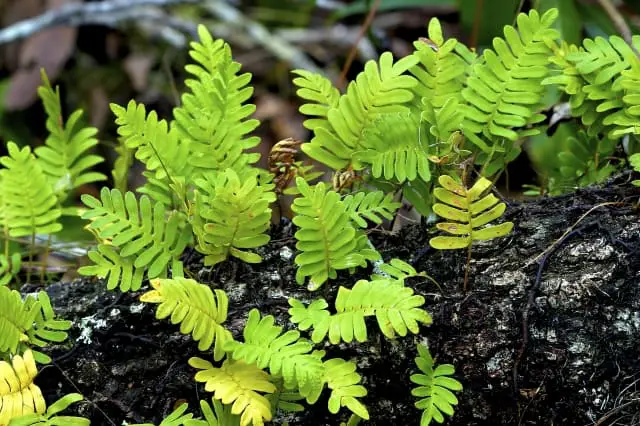
Gardens are rarely exposed to such extremes, so if a fern is established in a suitable spot with good irrigation, partial shade, and shelter against heavy wind or rain, it is likely to last as long as you want it to.
The oldest ferns known
Finally, the record for the longest living ferns is held by the slow growing tree ferns, Dicksonia antarctica and Cyathea australis. These fascinating plants – which predate the dinosaurs – grow by less than ten centimeters a year.

That means the specimens that can grow to be 15-20 meters tall in ancient woodlands could be more than two centuries old. Not only that, but these spectacular ferns can survive wildfires, being one of the first signs of returning life to the ravaged forest after the ash has cooled.
With due care and minimal maintenance, ferns can last for as long as you could want. They are true survivors.
